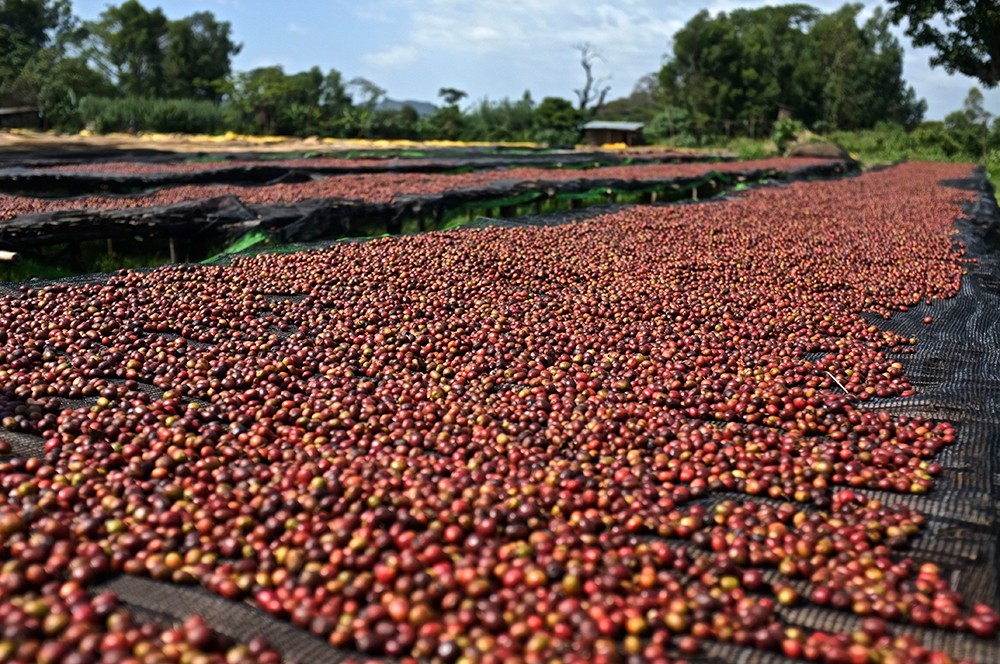
Think of a cherry. Now think of a cup of coffee. What if we told you those were the same thing? Well, we’d definitely be lying to you. Maybe not entirely though…
The coming-of-age for a cup of coffee can be quite the complex process. Much of the ordeal is wrapped in obscurity, confusion, and even fruit—that’s right, fruit. Today we’re going to talk about the process in which a coffee fruit becomes a coffee bean. Because that’s what coffee is after all. The seed of a fruit of a plant.
Three Types of Processes
Generally speaking there are three major types of processing methods that turn a coffee cherry into a dried and ready-to-ship coffee seed. We should clarify, there are plenty of other interesting methods, however, many of them are subtle variations of the three listed here.
Washed
Probably the most common method to process coffee is the washed method, which starts by removing the main layer of cherry-fruit from the seed using sharp blades. Once this layer is removed, another thin layer of organic material is exposed (mostly containing sugars and alcohols). This layer is called the mucilage—its responsible for much of the sweetness and acidity in coffee.
Removing the mucilage is the next step. This step ensures two things: 1) those sugars and alcohols will be gone by the time the coffee is put out to dry, and 2) we won’t ever have to say the word “mucilage” again, at least not for now. This layer is removed in large fermentation tanks via microbes and other hungry bacteria that don’t mind eating something named so strangely. Once mother nature does her work, any remaining mucilage is scrubbed and washed away (hints its name).
The beans are then placed out in the sun on large screens or in drum dryers where the remaining organic liquid is kicked out and shipped our way!
The washed process is known for raising coffees that have a bright and clean profile. For us, that would include the Colombia, and Guatemala.
Natural
The oldest and most sacred (not really) form of turning coffee boys into coffee men. In this method, the cherries are picked for quality and dried, fruit and all.
Unlike the washed method, naturally processed coffees are put out in the sun day one. This means a lot of things. Since the seed and fruit aren’t separated like the washed process, the two are able to play scrabble and get to know each other a bit. What does that mean? Fruity coffee, baby. Ever wondered why your cup tastes more like juice than joe? It’s because your bean and berry delicately danced beneath our balmy stellar sun. How’s that for alliteration? Moving on.
While these fruit-bombs can have outrageous flavors and unparalleled complexity, this process isn’t the easiest. Since the coffee bean is exposed to more organic matter in the drying step, rotting and uneven drying can occur. Because of this, the cherries have to be hand-sorted and hand-raked to upkeep the high level of charisma the coffee tend to carry.
Naturally processed coffees in our shop include the Ethiopia, and the Honduras.
Semi-Washed
The semi-washed process (also referred to as honey-processed or pulped-natural) is essentially a hybrid of the two. This process starts just like the washed method where the fruit of the cherry is kicked out of the party (with sharp blades, remember?).
This is where this process is unique.
Once the fruit is removed, only the seed and mucilage remain. Now the party is brought outside. Similar to the natural process, the seed is placed out in the sun with a level of organic material left to inform its future flavor. This time though, there’s much less fruit. Though there’s still some organic material, the same hand-raking care has to be taken for this process as well. This ensures even drying and that just enough fermenting happens—too much could be bad.
This process results in a coffee with reduced acidity, increased body, and an uncanny sweetness.
This would include our Brazil!
So maybe cherries and coffee aren’t the same thing, but now you’ll never look at them the same. If you’re interested in any of this or have questions about the different processes, come chat with us at any of our cafés!
As Ever,
LG